
[Source: John Stevenson]
glen_parva_old11.jpg) Glen Parva Junction signal box c.1885. The station entrance and booking office are seen
at street level, above. Photo from John Stevenson collection  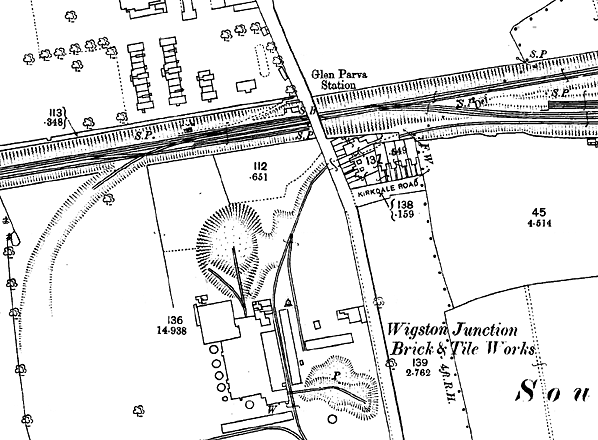
1886 1:2,500 OS map four years after Glen Parva station (note the original name) opened. The single goods siding is seen running behind the down platform. The spur to the brickworks was under construction at this time.
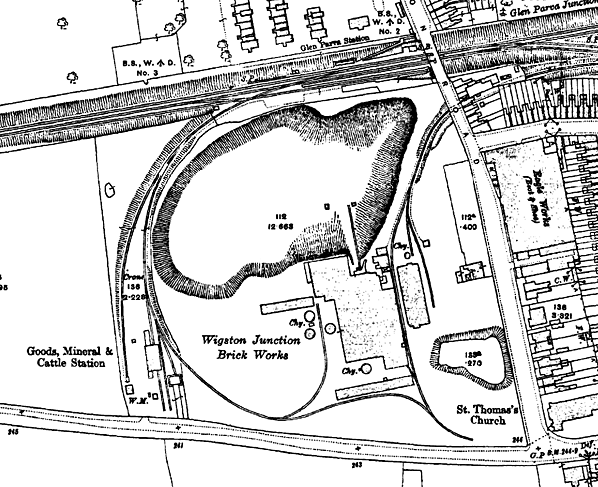
1914 1:2,500 OS map. Although the station was renamed Wigston Glen Parva in 1887, the original name is still shown here. The brickworks spur now also serves an extended goods yard with a goods shed, weighbridge and crane (5-ton) all shown.
 1955 1,2,500 OS map. The brick works has been replaced with a cement works, still rail-served. The station is now shown correctly as Wigston Glen Parva.
Photo by Nick Catford glen_parva_old1.jpg)
Wigston Glen Parva station, looking east from the up platform c.1900. Access to the down platform was by steps seen to the right of the bridge. The slope led to the goods dock.
Photo
by S W A Newton from Leicester & Rutland Record Office
glen_parva_old5.jpg)
The 'down' platform looking west, as a local LNWR train approaches c.1905.
Photo from John Stevenson collection glen_parva_old6.jpg)
A view from the same platform but in the opposite direction, as a return LNWR working from Leicester stops to pick up passengers. The ticket office is seen at street level at the top of the slope. c.1905.
Photo from John Stevenson collection glen_parva_old7.jpg) Looking west from the road overbridge towards Nuneaton and Birmingham. In this LMS (c.1930) era photograph, the army barrack buildings can be seen on the right. The original single goods siding is seen behind the down platform. The spur to the brick works and the later goods yard is seen beyond the platform.
Photo from John Stevenson collection glen_parva_old2.jpg)
Local children at play on the up platform at Wigston Glen Parva station c.1930s.
Photo from John Mann collection glen_parva_old9.jpg)
A scene in the final days of the LMS era just prior to the nationalisation of the railways. A local stopping train receives 'the peg' for a departure to Leicester.
Photo from John Stevenson collection glen_parva_old3.jpg)
Looking towards Leicester from the 'up' platform in 1961.
Copyright photo from Stations UK glen_parva_old10.jpg) Wigston Glen Parva station, looking east from the down platform just before closure in 1968.
Photo from John Stevenson collection glen_parva1.jpg)
The site of Wigston Glen Parva station in July 2011 Very little evidence remains, although the road access to the former siding on the left and the path retaining wall down to the platform on the right are still just visible. Compare this to the 1930s picture above.
Photo by John Stevenson
|


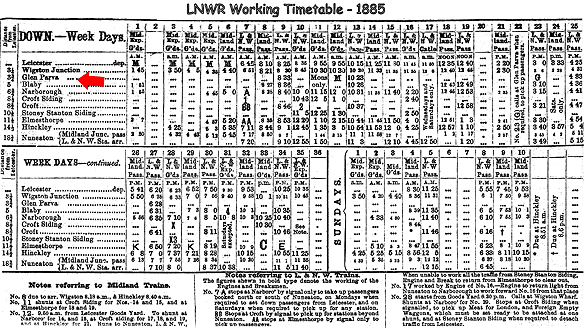

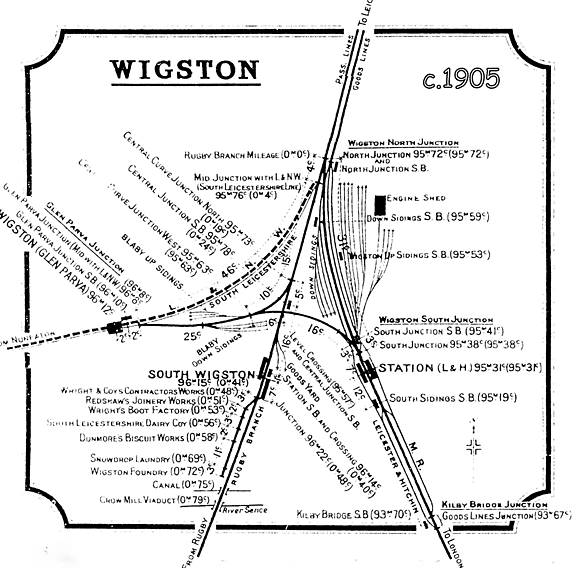

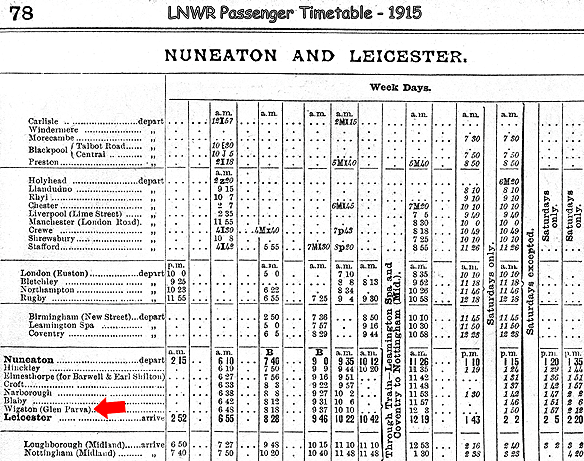

glen_parva_old_thumb8.jpg)
glen_parva_old_thumb4.jpg)
glen_parva_old_thumb12.jpg)

 Home Page
Home Page